Choosing the right stretch fabrics for a ballroom, Country, or skate dress can be daunting. Fabrics can truly make or break your costume – and, more importantly, your confidence on the dance floor. I learned this lesson the hard way early in my career.
Back in 1989, at nineteen and competing in my first U.S. Ballroom Championships, I was full of ambition. I had left my Architecture and Visual Design studies after just a year to pursue my passion: teaching and competing professionally in ballroom dancing. Moving across the country to Arizona, I was immediately faced with the rigorous standards of the ballroom world. I was told I needed to lose weight quickly. Like many professional dancers, I adopted a strict diet of protein and reduced carbohydrates, and added nightly runs after long days of teaching and rehearsing with my partner.
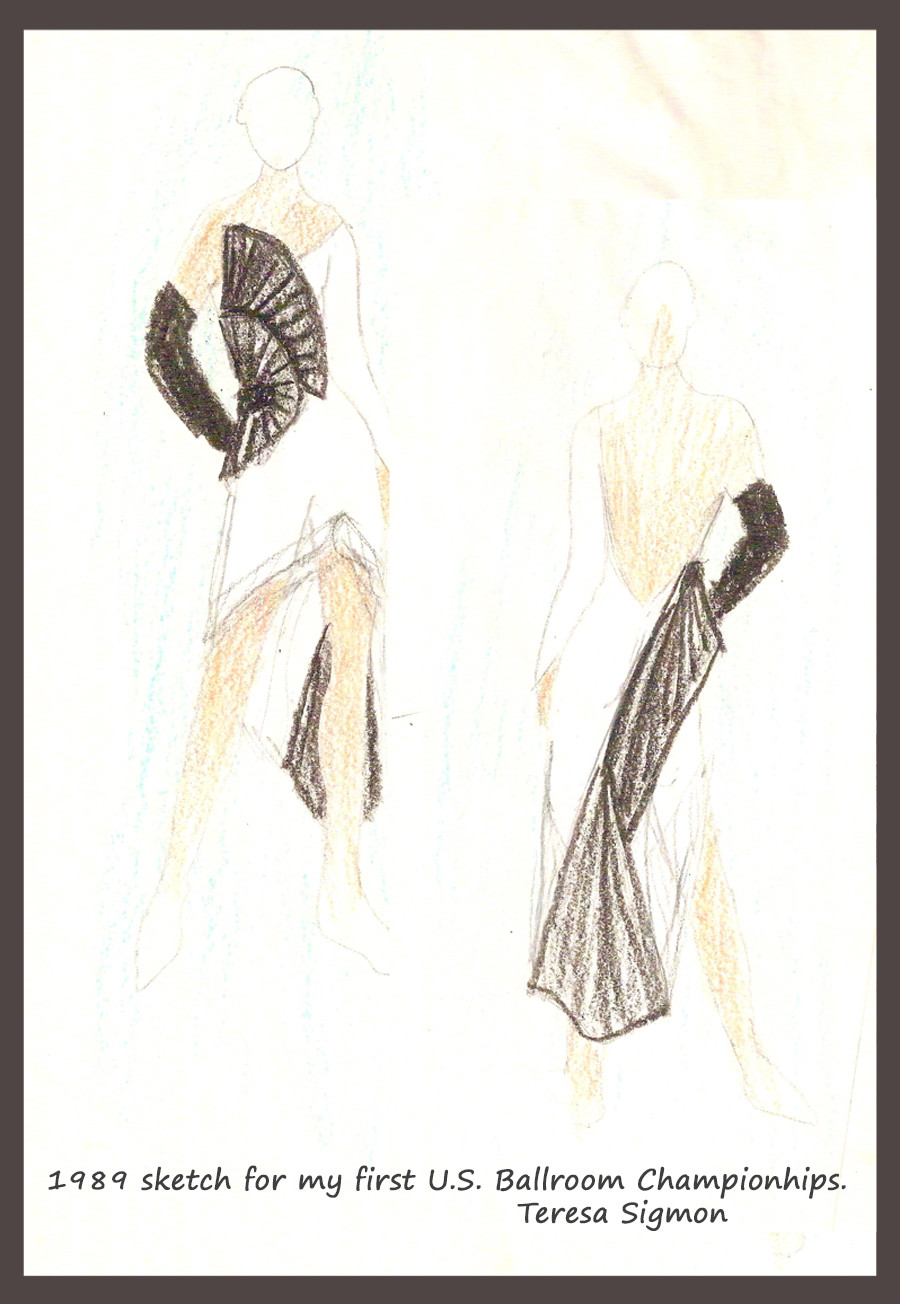 Teresa Sigmon ballroom dance dress sketch fortuny pleating
Teresa Sigmon ballroom dance dress sketch fortuny pleating
Simultaneously, I was preparing for the U.S. Ballroom Championships. Every evening, after my exhausting schedule, I dedicated hours to sewing my first “official” Rhythm dance dress for the competition.
Dress design had been a passion since my teens, and I was deeply inspired by haute couture. For this major event, I envisioned a striking black and white, asymmetrical Rhythm dance dress with Fortuny pleating.
The dress was intricate, featuring gathers, pleats, and dramatic black fans. I even splurged on custom white silk pleating. I was incredibly proud of its fashionable and complex design.
But here’s where things went wrong.
Firstly, in 1989, the internet was not around to tell me that haute couture was not the norm in ballroom dance at that time.
More importantly, I had no idea that white fabric and all those pleats would make me appear heavier than I was, despite all my efforts to lose weight!
After my first round at the U.S. Ballroom Championships, a judge rushed towards me, scowling and gesturing wildly at my dress. He exclaimed, “Why are you wearing white? It makes you look fat, and you just lost a bunch of weight!”
Devastated, I threw the dress away the moment I returned home. All the time, money, and pricked fingers felt like they were for nothing, or worse. I hated that dress. The judges clearly hated it. And I discarded it after only five dances.
That experience was a harsh awakening. I realized then how significantly the color and texture of a fabric could alter my perceived size.
White, I learned, is the least flattering color if your goal is to appear slimmer. Furthermore, the Fortuny pleating and fans added substantial three-dimensional texture to my frame.
Choosing white silk with Fortuny pleats was the worst possible fabric choice for my body shape and my goal to look thinner.
I share this ballroom dress disaster story so you can avoid making the same costly mistakes.
Fabric Choices Truly Matter for Ballroom Dance Costumes
Understanding the DOs and DON’Ts of Stretch Fabrics for Ballroom and Ice Skating Costumes
Today’s guide will delve into selecting fabrics and textures that enhance your Ballroom Dance Dress design, helping you achieve your desired look.
Continue reading for essential dressmaker details about various types of stretch fabrics to elevate your ballroom creations.
Stay Updated on Dressmaking Tips! Subscribe to the Sew Like A Pro™ Newsletter
Your privacy is valued. We never spam.
Light vs. Dark Colors in Ballroom Dance Dresses
Color is a powerful element that dramatically affects how you look in your ballroom dance dress.
If a slenderizing effect is desired, steer clear of light colors. Opt instead for medium to darker shades. Darker colors absorb light, creating shadows and depth that visually minimize size.
Conversely, if you are petite or slender and wish to add volume, medium or light colors are excellent choices. Lighter shades reflect light, making surfaces appear larger and more prominent.
For a deeper dive into color theory and personalized style, explore my blog on how to discover your best colors and styles. It offers valuable resources for color analysis to help you determine the most flattering colors for you!
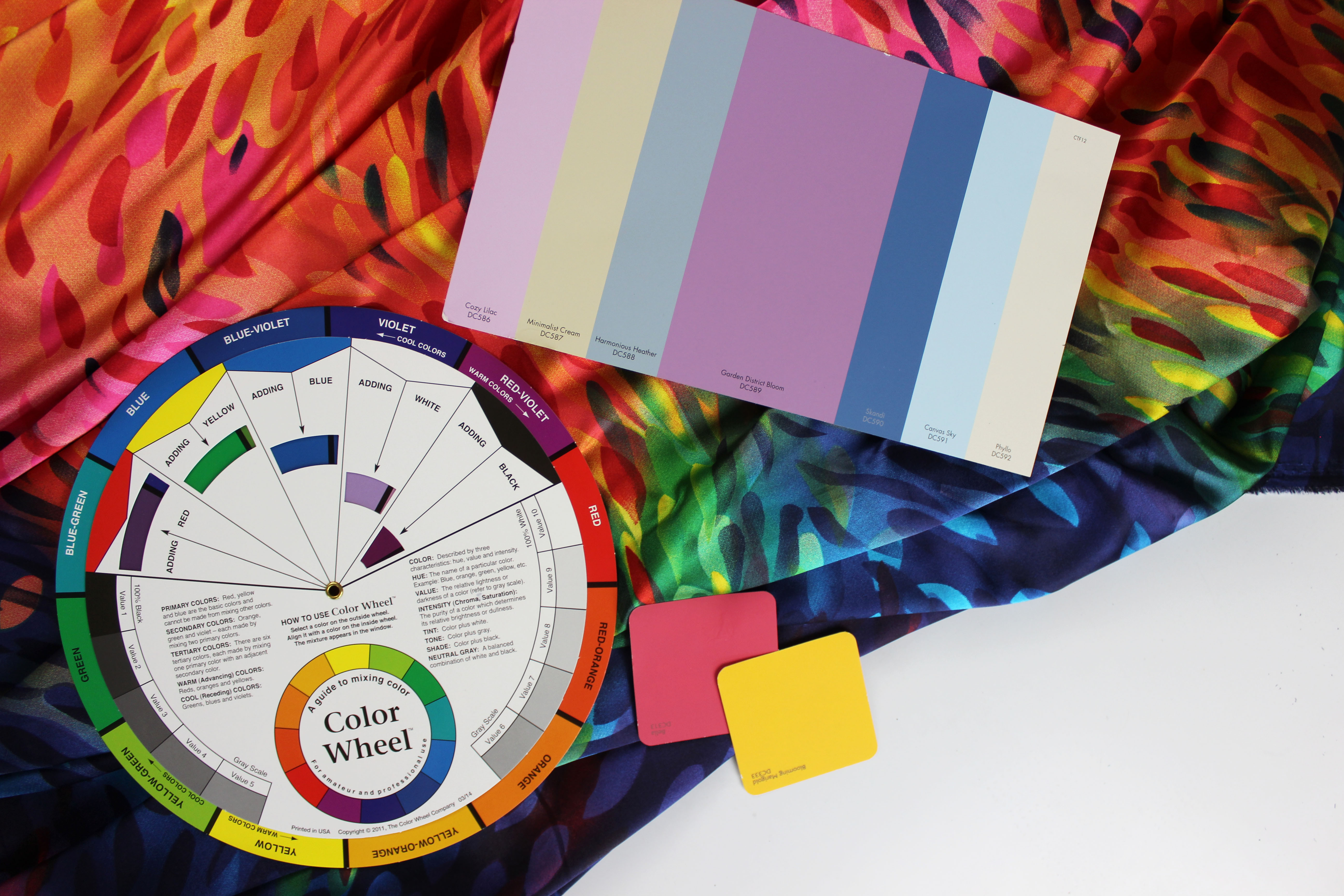
Alt text: Color wheel demonstrating perfect color combinations for ballroom dance dresses.
Shiny vs. Matte Stretch Fabrics for Ballroom Dance
Beyond color, the choice between shiny and matte stretch fabrics is another crucial consideration when selecting materials for your ballroom and skate costumes.
Matte stretch fabrics are universally flattering. They possess a “neutral” quality that can elongate the figure and create a slimming silhouette, especially when combined with strategically placed accent fabrics. Matte fabrics are a safe and elegant choice for most body types.
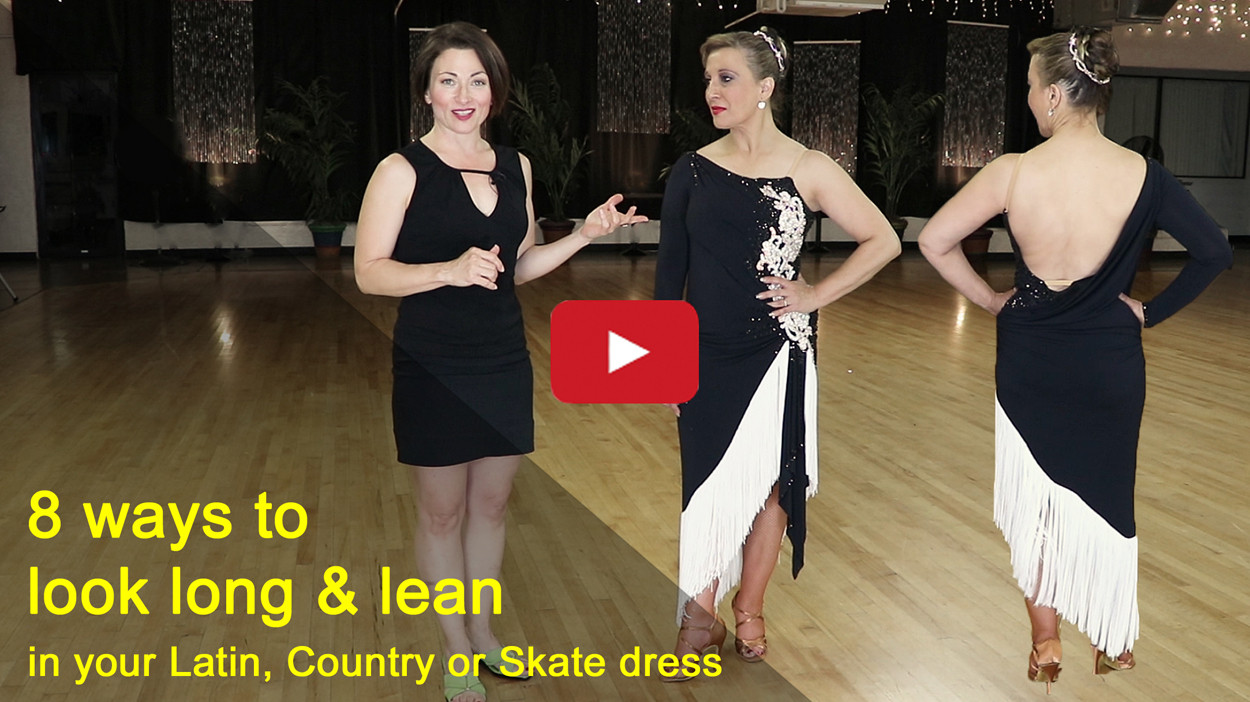 long line Latin dress, chainette fringe, Maria Arthur Murray Temecula
long line Latin dress, chainette fringe, Maria Arthur Murray Temecula
Alt text: Maria in a long line Latin dress featuring matte stretch crepe and high contrast lace appliqués, ideal for ballroom dance.
Due to their neutral nature, matte fabrics complement a wide range of body shapes. Furthermore, the absence of shine in matte fabrics makes rhinestones and other shimmering embellishments stand out brilliantly, adding captivating sparkle against a subtle backdrop.
Consider exploring this blog post featuring Maria, who uses a matte stretch crepe with high contrast lace appliqués to achieve a taller and more streamlined appearance.
Shiny fabrics, in contrast, tend to add visual bulk, making the wearer appear larger. Examples of shiny stretch fabrics commonly used in dance costumes include metallic foil, sequins, hologram fabrics, and crushed velvet.
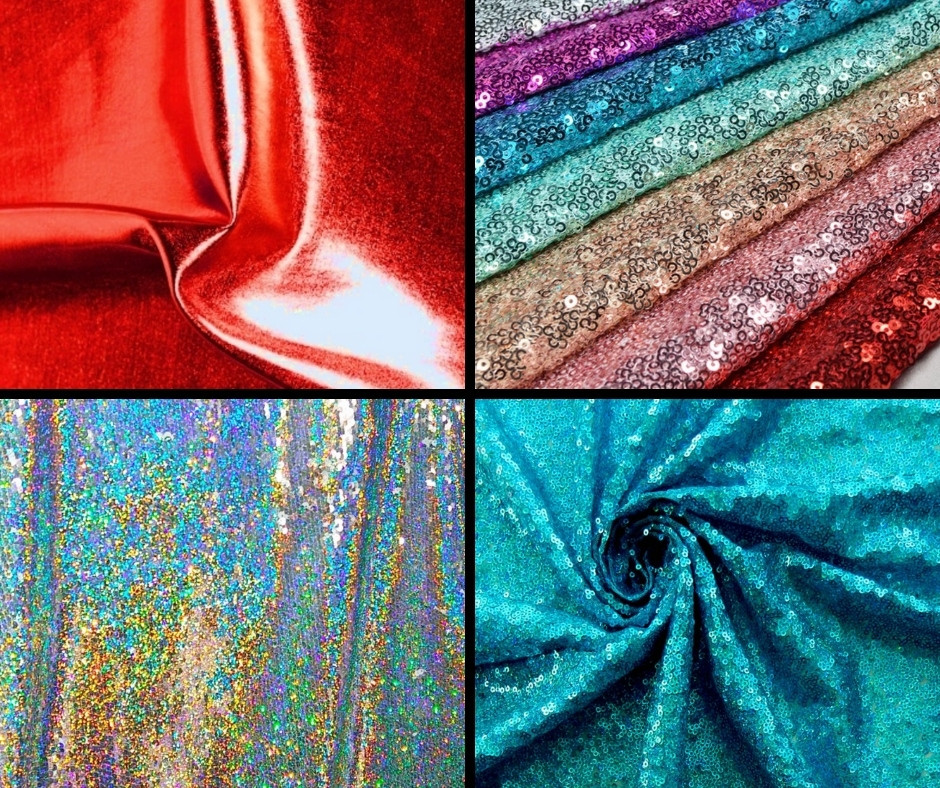 liquid foil and holographic sequin fabric examples of shiny fabrics
liquid foil and holographic sequin fabric examples of shiny fabrics
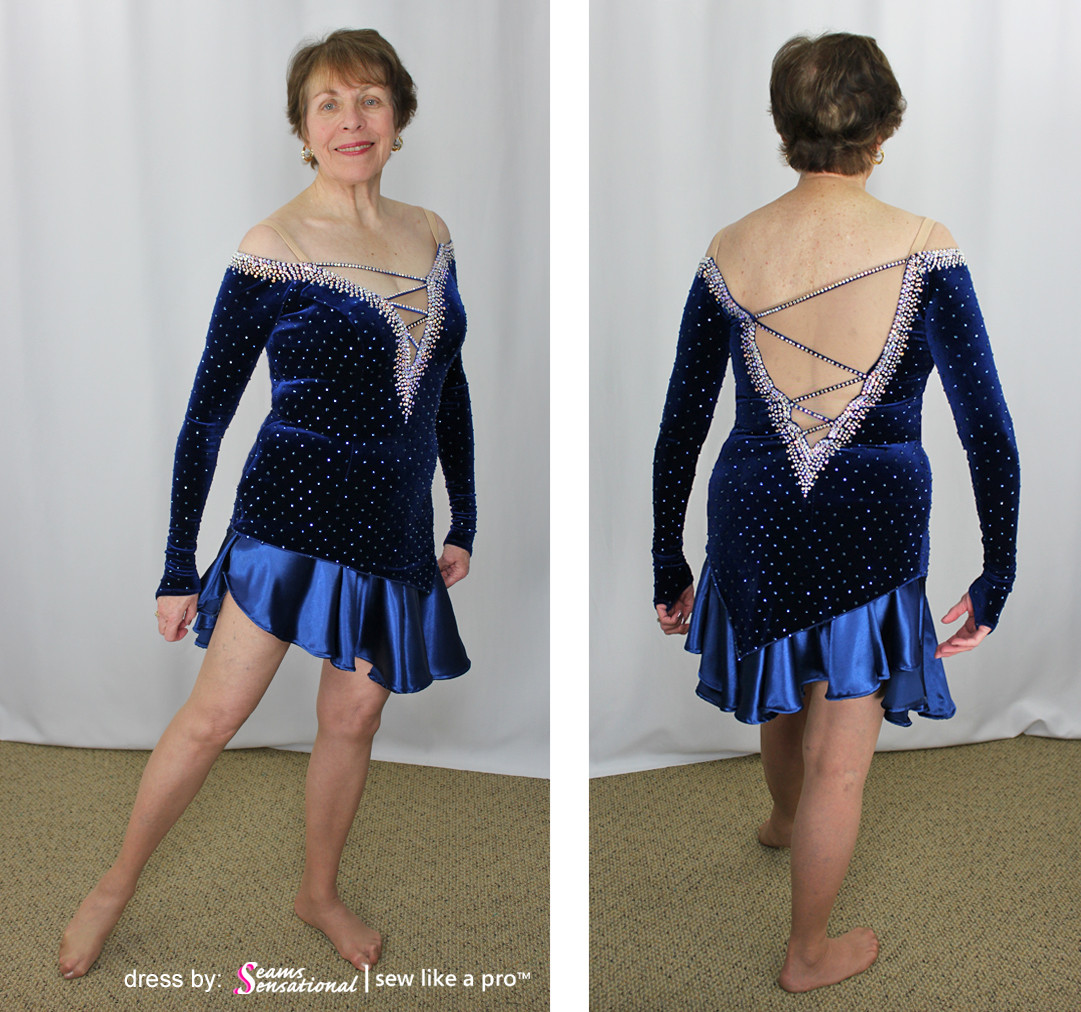
Alt text: Latin dance costume featuring crushed velvet, a shiny fabric, with mesh inserts and crisscross straps, suitable for ballroom performances.
If you are drawn to the allure of bling and shiny fabrics but wish to avoid added visual weight, consider using shiny fabrics as accents rather than the primary material for your ballroom dress.
For instance, on a client’s costume, I selected a matte stretch velvet as the main fabric but incorporated a shiny crepe back satin fabric for the short, flippy skirt to add a touch of glamour without overwhelming the silhouette.
You can watch the vlog featuring this velvet dress for more details and visual inspiration.
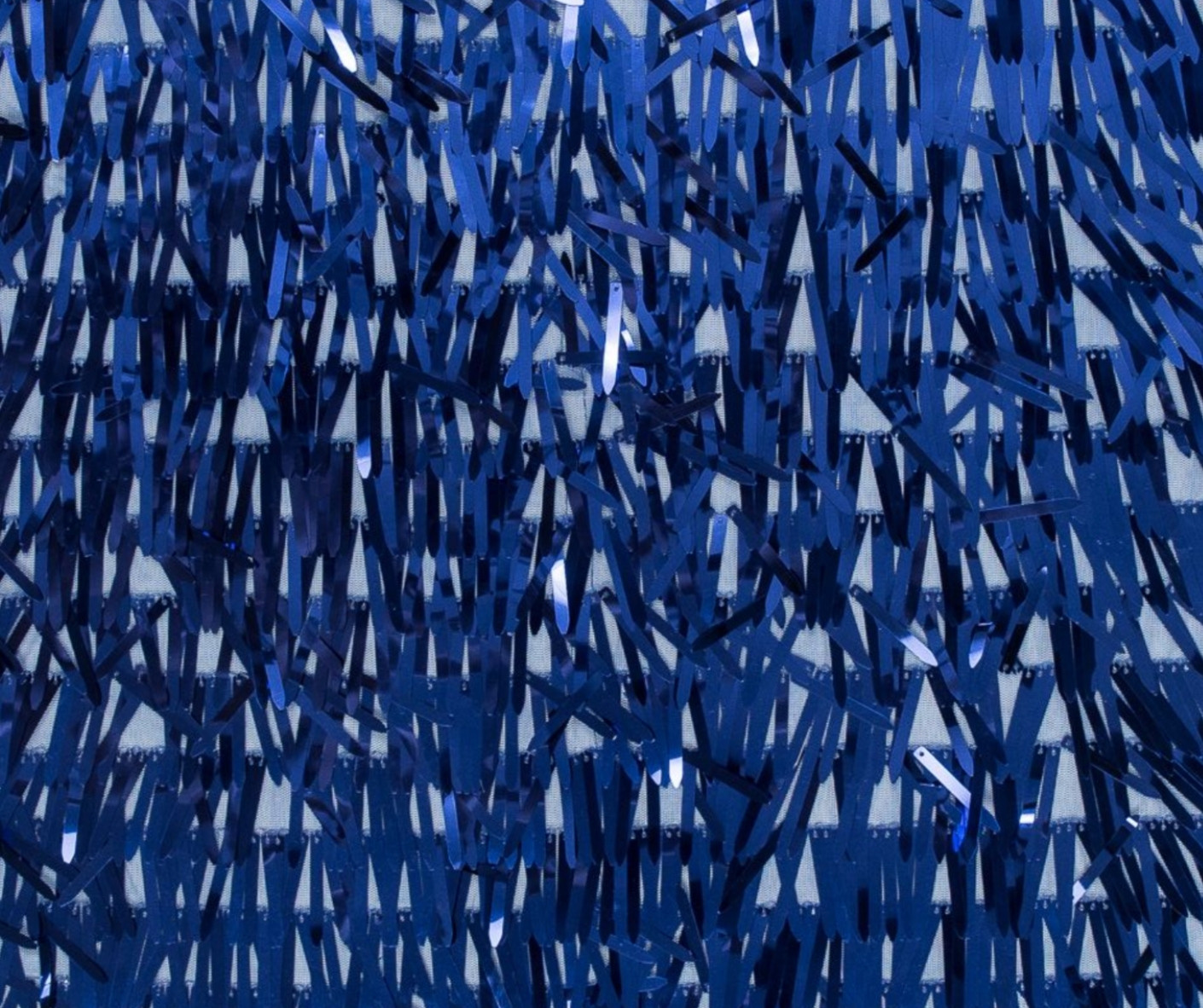 shiny metallic fringe
shiny metallic fringe
Fringe, a popular embellishment for dance dresses, can be either matte or shiny. Regular chainette fringe has a matte finish, while metallic fringe offers a shiny alternative. You can also create custom handmade rhinestoned fringe for a unique touch of sparkle.
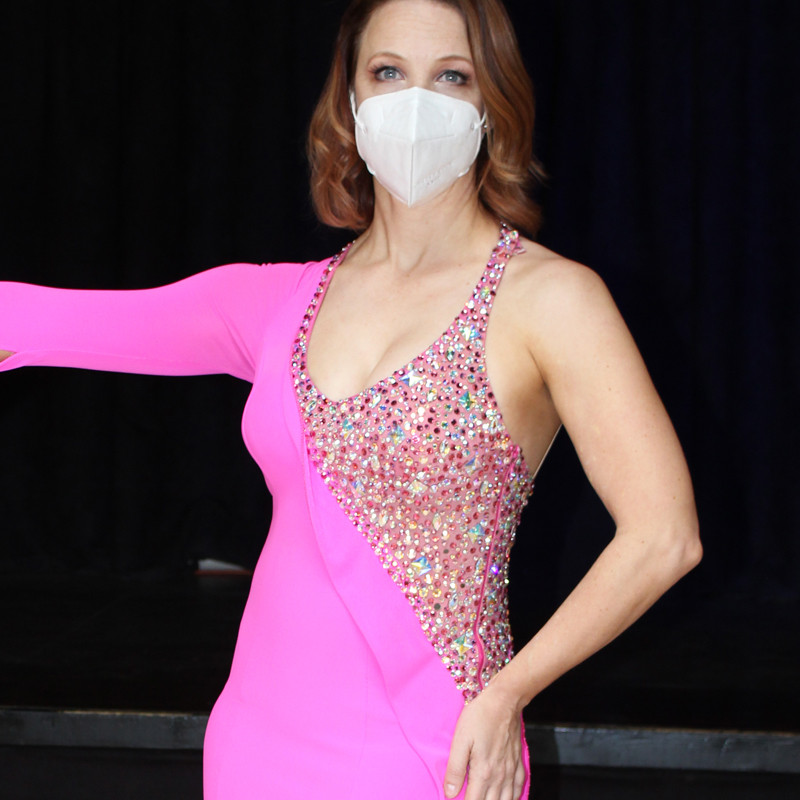 example of matte stretch fabric with slimming rhinestone design
example of matte stretch fabric with slimming rhinestone design
Alt text: Example of matte stretch fabric with a slimming rhinestone design on a fuchsia Latin dance dress, ideal for ballroom competitions.
Adding rhinestones is another way to modify the appearance of stretch fabrics.
To achieve sparkle while maintaining a slender silhouette, it’s generally wise to use matte fabrics and incorporate slimming rhinestone patterns, as exemplified in this pink Latin dress (originally a Smooth ballroom gown).
The primary fabric of the overdress is a matte stretch crepe, while the accent area is mesh adorned with rhinestones. Click here to view the blog featuring this Latin dance dress.
For more dazzling ideas, explore my Sew Like A Pro™ Rhinestone Inspiration board on Pinterest.
Stay Updated on Dressmaking Tips! Subscribe to the Sew Like A Pro™ Newsletter
Your privacy is valued. We never spam.
Stretch Velvet DOs and DON’Ts for Ballroom Dresses
Generally, stretch velvet is considered a matte fabric, unless it’s crushed velvet, which is categorized as shiny.
Stretch velvet is a versatile choice for most dancers and skaters. It is available in varying thicknesses, making it essential to obtain samples and assess the fabric weight. Dancers aiming for a slimmer look (or seeking cooler comfort on the dance floor) might prefer a lightweight velvet with a short nap. Conversely, dancers who are naturally slender (or skaters needing warmth in the rink) might opt for a thicker velvet with a longer nap.
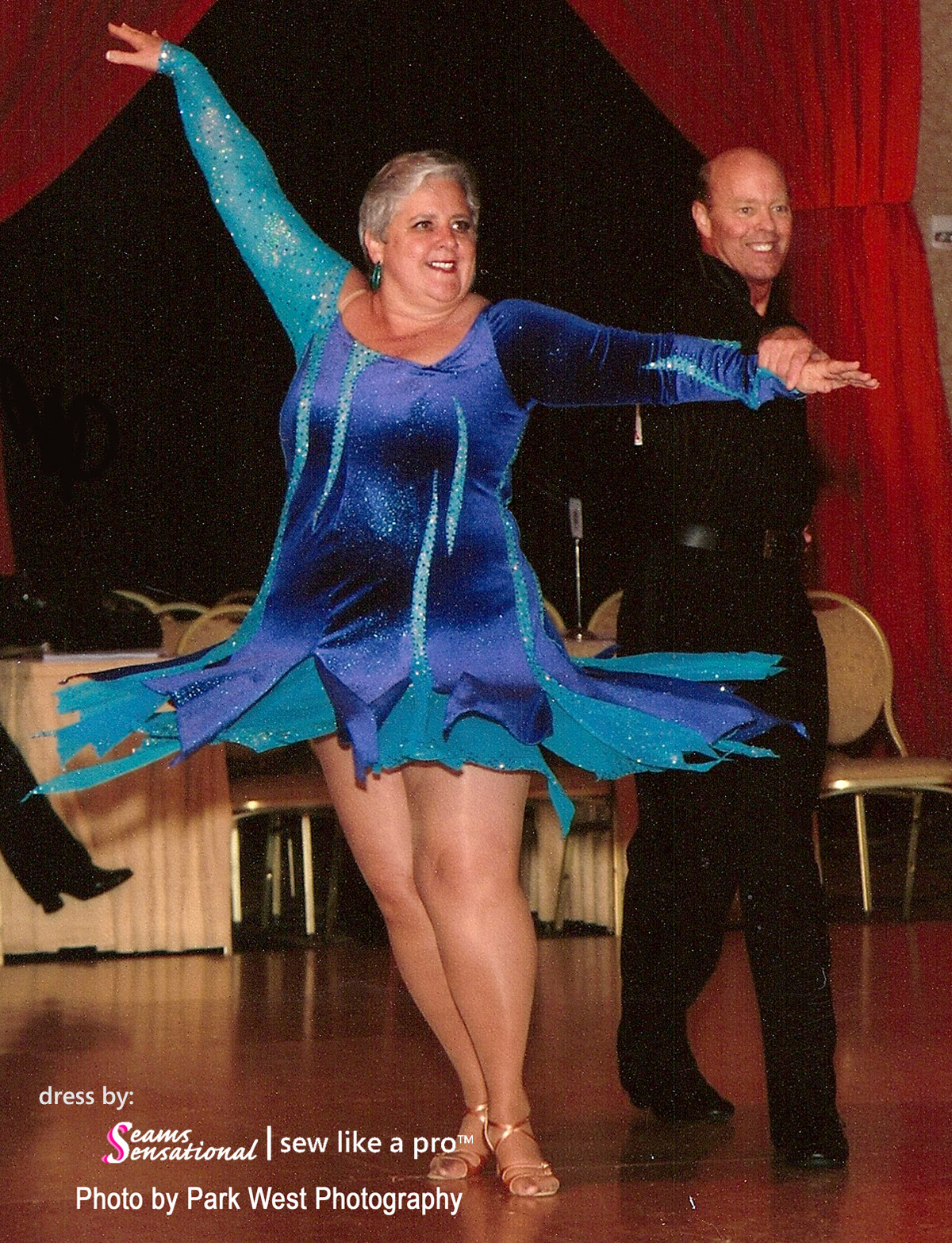 julie vincent wearing a purple velvet Latin dress
julie vincent wearing a purple velvet Latin dress
For example, the dress pictured was created using a lightweight matte glitter stretch velvet from Chrisanne Clover.
Julie, the dancer in the photo, is a curvy plus-size woman. Our goal was to accentuate her best features and showcase her dynamic dancing with a skirt that offered movement without revealing too much of her thighs.
Julie and I chose a dark, matte stretch velvet for the majority of the dress. The velvet incorporates glitter in a complementary tone, creating a subtle, tone-on-tone shimmer that mimics delicate rhinestones, adding depth rather than overwhelming shine.
Shiny glitter mesh was used as an accent on asymmetrical areas like vertical stripes, the underskirt, and one sleeve. This allowed Julie to incorporate shine while maintaining a smooth, flattering silhouette that highlighted her curves in the right places.
For more insights on working with velvet and dressmaking tips, explore my blog post featuring a velvet dress created by Tammy Arriola, a member of my Latin-Skate Dressmaker Program.
Handling Different Stretch Fabrics for Ballroom Costumes
Sewing with stretch fabrics can be challenging because the stretch factor varies significantly. The degree of stretch depends on the fabric type and the manufacturer. Even within the same fabric type, color variations can affect the stretch due to the dyeing process.
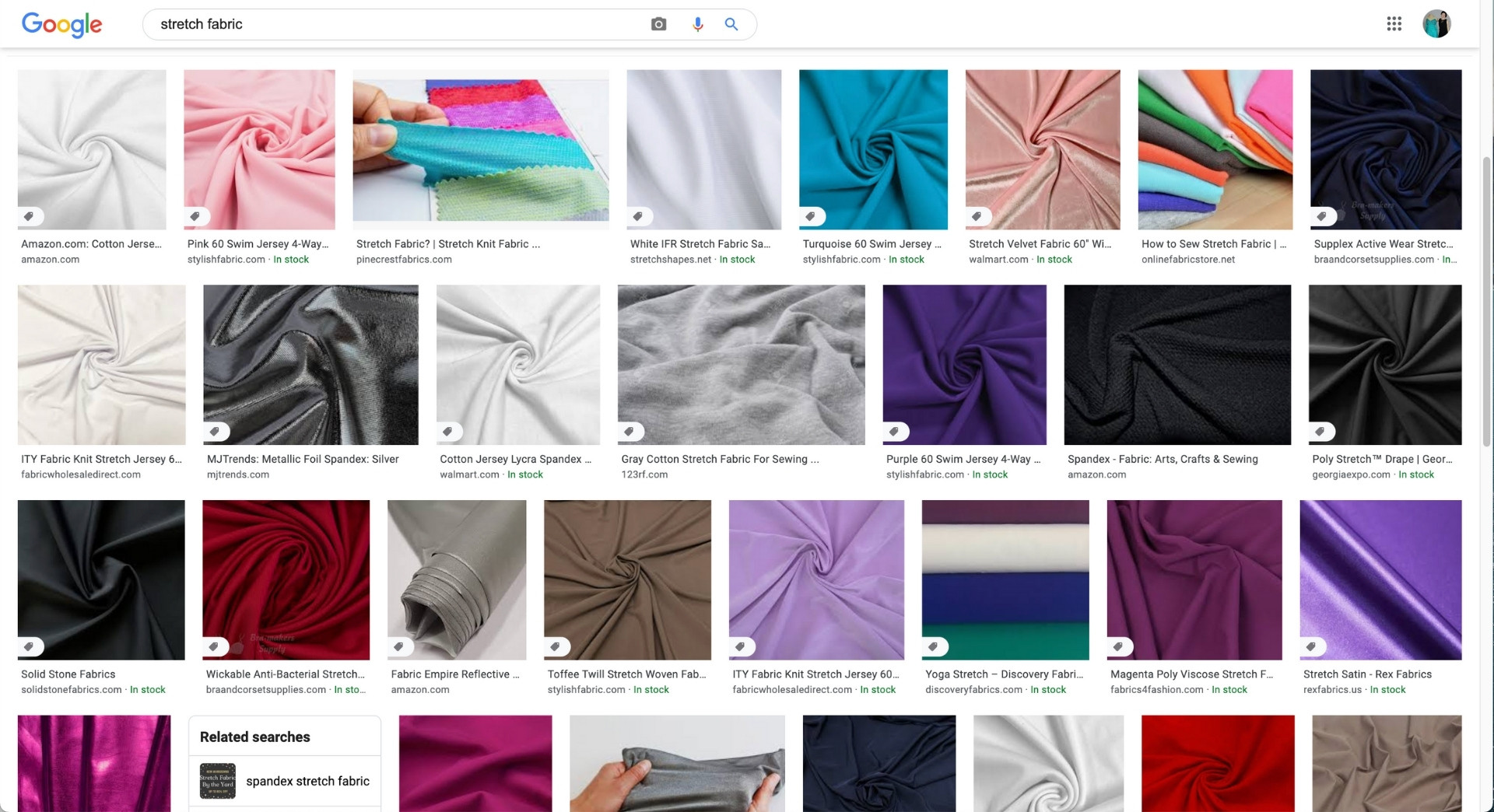 general stretch fabrics for dance and skate costumes
general stretch fabrics for dance and skate costumes
The key takeaway? Always request fabric samples whenever possible before committing to a large purchase.
If you’re looking for reliable sources for stretch fabrics, my free downloadable PDF of 55 fabric stores in 11 countries is the perfect companion to this guide!
Given the unique characteristics of each stretch fabric, understanding how to fit different types and adjust your patterns accordingly is crucial. And if you’re interested in mastering these techniques, sewing with stretch fabrics is a core focus of my online sewing school.
Stay Updated on Dressmaking Tips! Subscribe to the Sew Like A Pro™ Newsletter
Your privacy is valued. We never spam.

